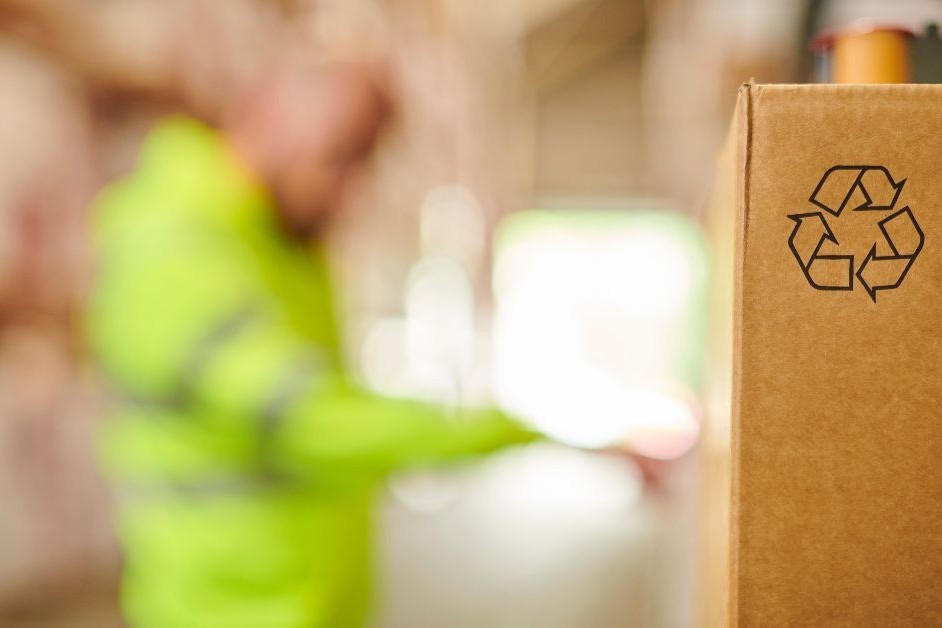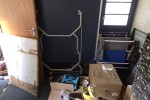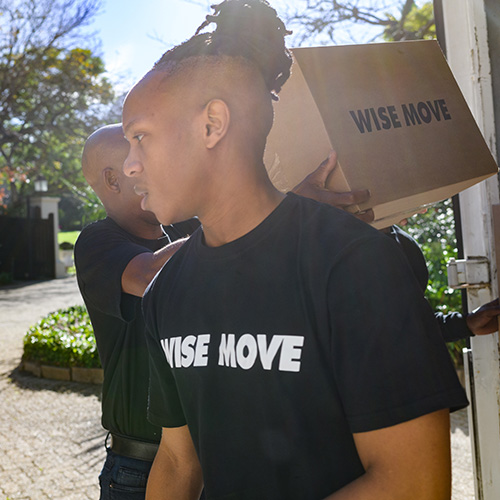
Every day, South Africans generate vast amounts of waste. From the packaging of our morning cereal to the remains of a lunchtime sandwich, waste is an inevitable part of our daily lives. But what happens to all this waste once we toss it into the bin?
Understanding the journey of our rubbish is crucial for appreciating the importance of effective waste management and discovering how we can each contribute to improving the system.
This guide aims to shed light on the South African waste management system and offer practical steps for citizens to help make a difference.
What is Waste Management?
Every year, South Africa produces an astounding 122 million tonnes of waste. This immense quantity places a significant burden on the nation's waste management systems, which are tasked with the responsible disposal of this waste.
As landfills become increasingly overwhelmed, the need for effective recycling initiatives and infrastructure becomes ever more critical. The goal is to divert as much waste as possible from landfills, paving the way for a sustainable future.
The first step in effectively diverting trash is knowing what type of waste goes where.
Types of waste
Firstly, what counts as waste? Waste is anything unwanted or unusable that is discarded and must be disposed of in an environmentally acceptable manner. Waste can be solid, liquid or even gaseous; however, most waste involved in waste management systems is solid waste.
While it may be tempting to dump all waste into the same pile, not all waste is the same. In fact, waste can be divided into categories.
General waste
Waste that doesn’t pose any immediate threat to people or the environment, such as household waste, garden waste, builder’s rubble, commercial waste, etc. is considered general waste. This is the type of trash that can be sorted, recycled and the rest sent to the landfill.
Hazardous waste
Waste that may cause danger to health or the environment, such as explosive, corrosive, chemically reactive, poisonous, biohazardous, radioactive, or carcinogenic substances is considered hazardous waste. Reading this, you'd think that you would probably never even have to deal with this type of waste, but the truth is we have all put hazardous waste into our trash bins as general waste. Examples include batteries, pesticide containers (even empty), aerosol cans, and medications.
Disposing of hazardous waste
In South Africa, hazardous household waste such as batteries, cleaning products, paint, pesticides, automotive fluids, electronics, light bulbs, chemicals, aerosol cans, pharmaceuticals, and personal care products should be disposed of through designated hazardous waste collection sites, municipal drop-off points, and specialized recycling programs. Many retail stores and automotive shops also offer take-back programs for specific items like batteries and motor oil. It's important to check local municipal websites for specific disposal instructions and collection event schedules to ensure safe and environmentally friendly disposal of hazardous materials. Avoid disposing of these items in regular trash or down the drain to prevent environmental harm.
Waste can also be separated based on its source. This is important because technically, all waste can be hazardous. General household waste littered in a field can be hazardous, and biodegradable waste dumped in a ravine can be hazardous.
That's why it’s essential that each type of waste is collected, treated and disposed of correctly. If not, it could pose a serious threat to the environment and people.
|
Waste Source |
Description | Waste Management System |
|
Domestic / household / residential waste |
Waste generated by a household. | Collected weekly by municipal services, household waste is typically sent to landfills or waste transfer stations, with some areas offering recycling programs for separating recyclables from general waste. |
|
Agricultural waste |
Waste from rearing and processing animal products and agricultural crops. | Biodegradable agricultural waste is composted or used as fertilizer, while non-biodegradable or hazardous waste is incinerated or treated through bioremediation processes. |
|
Biodegradable waste |
Waste that will eventually decay back into soil such as garden refuse and food leftovers. | Biodegradable waste is commonly composted at the household level or at composting facilities, or converted to biogas through anaerobic digestion. |
|
Bulky waste |
Large waste items like furniture, broken appliances, large auto parts and tree stumps. | Bulky items are collected during special municipal collection days, taken to drop-off sites, or recycled and repurposed where possible. |
|
Commercial / trade waste |
Waste created by offices, shops, and other commercial activities. | Commercial waste is collected by private companies. Recyclables are separated and sent for recycling, while non-recyclable waste is disposed of in landfills. |
|
Construction / demolition waste |
Waste materials from construction sites, road-building and the demolition of buildings. | Construction waste is sorted for recycling materials like metal and concrete, with non-recyclable waste sent to designated C&D landfills or reclaimed for reuse. |
|
Industrial waste |
Waste that comes from industrial and manufacturing processes. | Industrial waste is managed by treatment facilities for hazardous materials, recycled when possible, and non-hazardous waste is disposed of in landfills. |
|
Institutional waste |
Waste from institutional buildings such as schools, hospitals and other public buildings. | Waste from institutions like schools and hospitals is collected by private services, with recycling programs in place, and hazardous waste handled by specialized services. |
|
Medical waste |
Any solid or liquid waste from the treatment, diagnosis and immunisation of people or animals. | Medical waste is primarily disposed of through high-temperature incineration or autoclaving, with any remaining waste sent to designated hazardous waste landfills. |
|
Municipal solid waste |
The total waste generated by a municipal area. | Municipal solid waste is collected regularly, with recyclables sorted at the source or at MRFs, and non-recyclable waste disposed of in landfills, supported by local recycling initiatives. |
However, each South African citizen also has a big part to play in making sure we take the strain off the system by doing our part. You can help implement new policies on a municipal level by being aware of your local waste management systems and engaging with your municipality to find suitable solutions.
Let's look at what happens to your trash once it lands in your bin.
What Happens to Your Trash After You Throw It Away
In South Africa, once you throw your trash away, there are a few things that happen (or can happen) before it reaches the landfill. Knowing what happens might help you make some easy changes to make sure only the necessary bits end up there.
Collection day
Firstly, if you throw all your trash mixed into one single black bag or put in your wheelie bin on trash day, it’s considered “dirty” trash and is taken to a dirty material recovery facility (dMRF) by your local waste collection team– the guys who we all give lovely thank-you gifts over the Christmas period.
Waste pickers

However, before they collect it, a waste picker may visit your trash. This is an informal waste recycling process where recyclables are removed from dirty trash to be sold to recycling facilities. It’s estimated that some waste pickers can make as much as R7000 per week. If you don’t want your trash scratched in, you may want to consider sorting your trash.
Trash sorting
A key part of any waste management system is separation at source. This means sorting and separating trash before it goes into a black bag—whether it's at home, in companies, at schools, or in public spaces—to make it easier for each type of waste to be disposed of properly, or recycled.
Typically, waste is separated into:
-
Recyclables: Any item that can be recycled.
-
Compost: Any biodegradable waste such as food and garden refuse.
-
Landfill waste: All other waste that can’t be recycled or composted to be sent to the landfill.
 The best way to manage this is by using separate bins or bag types for each type of waste. Many households already use separate bins for recyclables, compost (think Bokashi, or earthworm farms), and landfill waste. Public spaces often have multiple bins placed together to encourage proper disposal of recyclables.
The best way to manage this is by using separate bins or bag types for each type of waste. Many households already use separate bins for recyclables, compost (think Bokashi, or earthworm farms), and landfill waste. Public spaces often have multiple bins placed together to encourage proper disposal of recyclables.
While sorting trash may seem inconvenient at first, it quickly becomes a habit. You'll be amazed how little trash actually needs to go to a landfill and how much can be recycled or composted.
This small effort can significantly contribute to a more sustainable and greener future.
Landfills
In the end, all your non-recyclable trash is then sent to your local landfill where it is dumped in a prepared area that is prepared in a special way to prevent toxins from leaking into the soil.
Next, it is compressed to reduce it and covered by soil to minimise the smell and any harmful toxins and gases being released into the environment.
Landfills are not good by any means, but they're better than ending up as environmental pollutants.
Environmental pollution
In an ideal world, all our trash would be sorted, recycled, with only the minimum sent to the landfill. However, our waste management isn't efficient, and a lot of waste, especially in rural areas, ends up being dumped in the environment or burned.
This is perhaps one of South Africa's biggest challenges when it comes to waste management.
Waste management challenges in South Africa
South Africa's waste management system is facing a mounting crisis. As the population rapidly grows, so does the amount of waste generated, creating immense pressure on an already strained infrastructure. This issue is most pronounced in major cities, where the exponential increase in waste is overwhelming existing systems.
-
Landfills reaching max capacity
Take a look at the landfills, for instance. Many of these essential sites are nearing their full capacity, with some expected to reach their limit as early as 2025. The overcrowding of landfills is not just a logistical problem; it poses severe environmental risks. As these sites overflow, harmful toxins seep into the environment, threatening both ecological and human health.
-
Hazardous waste mismanaged
A significant part of the problem lies in the handling of hazardous waste. Shockingly, 94% of hazardous waste ends up in landfills, posing a serious danger due to improper management. This not only endangers the environment but also puts human health at risk.
-
Inadequate municipal services
Adding to these woes, waste collection services are inadequate. Only 60% of households have access to weekly waste collection. The lack of regular and efficient waste collection leads to illegal dumping and littering, further exacerbating environmental degradation.
-
Recycling facilities lacking
Moreover, the country suffers from a lack of comprehensive recycling services and infrastructure. This deficiency hinders efforts to reduce the burden on landfills and fails to capitalize on the potential benefits of recycling. Without robust recycling systems in place, the pressure on waste management infrastructure continues to escalate, making the need for immediate and effective solutions ever more critical.
Recycling: A Key Solution to South Africa’s Waste Problems
According to the most recent government statistics, only 10% of South Africa’s total waste is recycled while the other 90% goes to landfills or worse — is dumped illegally. While a lot of recycling is separated at the source, most recycled materials are actually separated from landfill waste.
This isn't in line with the WHO Sustainable Development Gaols and luckily our government is taking steps to hopefully improve the situation. The current recycling goal is to increase the amount of recyclable items diverted from landfills to 25% and local governments are investing in recycling initiatives and education, making it easier for communities to recycle in their households, businesses, schools and public places.
But how complicated is recycling really, and can we do anything to reach and exceed that goal?
What Is Recycling?
Recycling is the collection and processing of waste materials which are converted into new materials and products to be sold and used again.
Recycling plays an essential part in South Africa's waste management systems by minimising waste and extending the life cycle of products to help create a more sustainable and environmentally friendly economy.
It is carried out by recycling facilities, but also by you and me– when we reuse.
What Can Be Recycled?
If you're considering turning those extra peaches into jams or reusing your boxes to move in the future. That's recycling too. However, everything that you won't be using needs to go into special bins or bags to be recycled by the professionals. Here's what they can use:
-
Paper and cardboard: Newspaper, magazines, office paper, phone books, school books, cardboard boxes, toilet rolls, cardboard milk cartons, etc.
-
Aluminium and steel: Drink cans, food tins, aluminium foil and packaging.
-
Glass: Glass bottles and jars.
-
Plastic: Only certain plastics, as seen below.
Can all plastic be recycled?
When it comes to plastic, it can be tricky to know whether it’s recyclable or not. That's why many plastic items will have a number, the plastic identification code, imprinted on the bottom to tell you the type of plastic and if it can be recycled. But these numbers are only helpful if you know what each number means — which many people don’t.
So, to help you out, here’s a breakdown of the plastic identification codes and what they mean:
|
Number |
Type of Plastic | Recyclable or Not |
|
1 |
PET – Polyethylene Terephthalate | Recyclable |
|
2 |
HDPE – High-Density Polyethylene | Recyclable |
|
3 |
PVC – Polyvinyl Chloride | Not Recyclable |
|
4 |
LDPE – Low-Density Polyethylene | Recyclable |
|
5 |
PP – Polypropylene | Recyclable |
|
6 |
PS – Polystyrene | Recyclable |
|
7 |
Other – BPA, Polycarbonate, LEXAN and PLA | Not Recyclable |
Just because some plastics can’t be recycled, it doesn’t mean that they must automatically be sent to the landfill. There are some pretty clever ways to sustainably discard non-recyclable plastics, one such option being Ecobricks — a ‘brick’ made out of a 2-litre plastic bottle filled with non-recyclable plastics that can be used as a building block to construct buildings.
There are some pretty clever ways to discard non-recyclable plastics sustainably - like Ecobricks!
Here are some of the common items that people think can be recycled but shouldn’t be put in the recycling bin.
| Commonly confused non-recyclables | ||
| Disposable coffee cups | Cling wrap | Small yoghurt containers |
| Ceramic items | Mirrors | Waxed paper |
| Tissues, paper napkins and serviettes | Chip packets | Sweet and chocolate wrappers |
| Cosmetic tubes and toothpaste tubes | Stickers | Dirty plastic |
How to Recycle in South Africa
Thanks to the growing focus on recycling initiatives and infrastructure, recycling in South Africa is a lot easier than you may think. Here's a step-by-step guide on how to recycle in South Africa:
-
Have a separate recycling bin in your home
-
Use a clear refuse bag to help differentiate your recycling from your general waste
-
Before putting items in your recycling bin, rinse and dry them so that they aren’t contaminated with other substances
-
Make sure you put the correct items into your recycling bin
-
Once the bin is full, discard your recycling correctly — you have 3 options:
-
Weekly collection: Many areas in South Africa offer a free weekly collection service similar to general waste collection but managed by a private company. Find out the collection day for your area and place your recycling bags outside your home to be collected. Some collection services even leave new clear refuse bags for you to use.
-
Recycling drop-off sites: If you don't have a collection service in your area, you'll likely have a drop-off site nearby where you can offload your recycling — this could be at a local school, shopping mall, public centre, etc. At some drop-off sites, your recycling needs to be sorted into paper, plastic, glass and metal, so make sure to check beforehand.
-
Recycling buy-back centres: These are centres that will actually pay you for handing them your recycling. This is why you may see people who are known as reclaimers or waste pickers who pick up litter and sort through public bins to find recyclable items that they can exchange for money. In fact, there are an estimated 200 000 waste pickers who make a living from selling trash to recycling depots.
Click here to find recycling collection services, drop-off sites and buy-back centres in your area.
What happens to my recycling after it is collected?
Once you hand off your recycling either by drop-off or collection, you may be wondering— how is my plastic milk carton actually recycled and converted into a new product?
It’s actually a lot simpler than you may think— the recycling process can be divided into 3 main steps: sorting, reprocessing and reselling.
To find out how your trash is turned into another man’s treasure, here’s a step-by-step look at the recycling process:
1. Sorting
Before any recyclables can be processed, they first have to be sorted, especially if it is mixed recycling where all the paper, plastics, glass and metals are all together.
This is done at a clean materials recovery facility (cMRF) which can use both hand and machine to separate the different recyclables. Here’s how it’s done:
Step 1: Any non-recyclables are removed.
Step 2: A vibrating machine separates the cardboard and paper so that different types of paper can be sorted by hand and tied in bales.
Step 3: The remaining recyclables are put on a conveyor belt where a magnet removes any steel cans.
Step 4: Using optical scanners, different types of plastics are identified and separated.
Step 5: An eddy current (a special type of magnet) is then used to remove any aluminium cans.
Step 6: All that should remain is the glass which is then dumped into a large container at the end of the conveyor belt.
Once separated, each type of recyclable is then sent to be reprocessed at their respective specialist factories.
2. Reprocessing
Each type of recyclable material has its own process for being turned back into raw material for manufacturing products. Here’s a quick look at how each recyclable is reprocessed:
- Paper: Baled paper is blended with water and chemicals to form a slurry, de-inked, and screened to remove contaminants. The clean slurry is then used to produce new paper.
- Plastic: Plastics are sorted, washed to remove impurities, shredded, melted, and formed into pellets for manufacturing new plastic products.
- Glass: Glass is sorted by color, washed, crushed, screened, and then melted and molded into new glass products.
- Metal: Metals are separated into ferrous and non-ferrous types, compressed, shredded, melted, and purified before being formed into new metal products.
Once the recyclables are processed into raw materials, they are sent to factories to be manufactured into new products.
3. Reselling
The final step is selling the products made from recycled materials. While not all recycled products are recyclable, the aim is to produce items that can be recycled again, creating a circular economy that minimizes waste and extends product lifecycles.
Recycling or reusing something is always better than sending it to the landfill.
Get involved - start recycling
If you’d like to find out more about recycling initiatives near you to help do your part in creating a greener future, here are some leading recycling initiatives in some of South Africa’s major cities:
| City | Recycling Initiatives |
| Cape Town | ThinkTwice, Oasis, Regenize and Abundance Recycling |
| Johannesburg | Mpact, Whole Earth Recycling, The Glass Recycling Company and ECOMonkey |
| Durban | Evergreen Recycling, Don’t Waste Group, AST Recycling |
| Pretoria | The Recyclers, Open Sky and South Group Recycling |
| Port Elizabeth | Greencycle, Cannibal Recycling, Alurite and Bluewave Recycling |
| Bloemfontein | WYKCO, Waste Retrievers and FS E Waste |
Ready to make an impact?
Reducing your waste and making an impact is a worthwhile cause that not only helps the environment, but us as well. We hope this guide on waste management in South Africa has shed some light on the process and will encourage and inspire more South Africans to reduce, reuse and recycle!
What do our customers say?





















![How Many Moving Boxes Do You Need [Quick Guide] How Many Moving Boxes Do You Need [Quick Guide]](https://cdn.wisemove.co.za/image/blog/f402bbe3e47e09aa41a6d8370888b926.jpeg)











